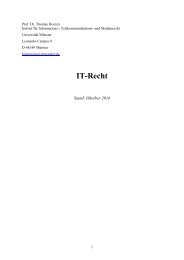3d4yVkKMl
3d4yVkKMl
3d4yVkKMl
You also want an ePaper? Increase the reach of your titles
YUMPU automatically turns print PDFs into web optimized ePapers that Google loves.
- 2 -<br />
kill, take and treat whales for purposes of scientific research — Existence and limits of a State<br />
party’s discretion under Article VIII — Standard of review to be applied by the Court when<br />
reviewing special permits granted under Article VIII — Whether programme involves scientific<br />
research — Whether, in the use of lethal methods, the programme’s design and implementation are<br />
reasonable in relation to achieving its stated objectives — Objective character of the standard of<br />
review — The Court not called upon to resolve matters of scientific or whaling policy — The<br />
Court’s task only to ascertain whether special permits granted in relation to JARPA II fall within<br />
scope of Article VIII, paragraph 1 — Meaning of the phrase “for purposes of scientific research”<br />
in Article VIII, paragraph 1 — Meaning of the terms “scientific research” and “for purposes<br />
of” — Term “scientific research” not defined in the Convention — Four criteria for “scientific<br />
research” advanced by Australia — Criteria advanced by Australia not adopted by the Court —<br />
No need for the Court to devise alternative criteria or to offer a general definition of “scientific<br />
research” — Meaning of the term “for purposes of” — Irrelevance of the intentions of individual<br />
government officials — Research objectives alone must be sufficient to justify programme as<br />
designed and implemented.<br />
JARPA II in light of Article VIII of the Convention.<br />
Description of JARPA — Description of JARPA II — Four research objectives identified in<br />
JARPA II Research Plan — No specified termination date stated in Research Plan — Programme<br />
operates in Southern Ocean Sanctuary established in paragraph 7 (b) of the Schedule to the<br />
Convention — Mix of lethal and non-lethal methods indicated in JARPA II Research Plan —<br />
Sample sizes for fin and humpback whales according to Research Plan — Sample size for minke<br />
whales according to Research Plan — No effect on whale stocks according to Research Plan.<br />
Application of standard of review to JARPA II — Japan’s decisions regarding the use of<br />
lethal methods — Non-lethal methods not feasible at least for some of data sought by JARPA II<br />
researchers — No basis to conclude that use of lethal methods is per se unreasonable in context of<br />
JARPA II — Research Plan should have included some analysis of feasibility of non-lethal<br />
methods — No evidence of studies of feasibility or practicability of non-lethal methods — Scale of<br />
use of lethal methods in JARPA II — Comparison of JARPA II sample sizes to JARPA sample<br />
sizes — Similarities in programmes cast doubt on argument that JARPA II objectives call for<br />
increased minke whale sample size — Japan’s decision to proceed with JARPA II sample sizes<br />
prior to final review of JARPA — Five-step process for determination of sample sizes —<br />
Determination of sample sizes for fin and humpback whales — Effect on sample size of using<br />
12-year research period for fin and humpback whales — Sample size for fin and humpback whales<br />
not large enough to produce statistically relevant information on at least one central research



